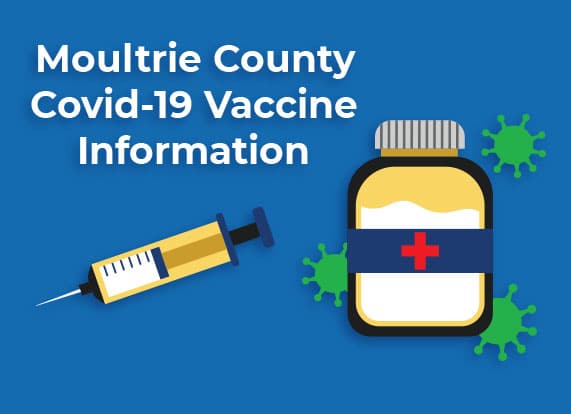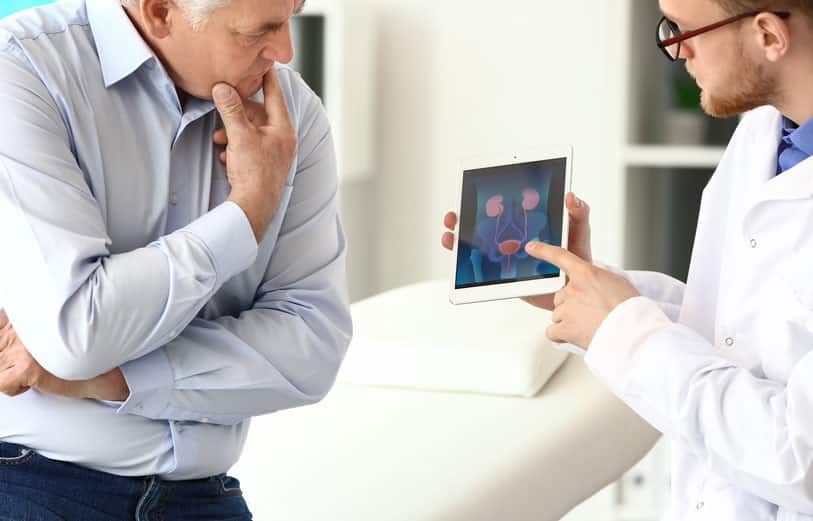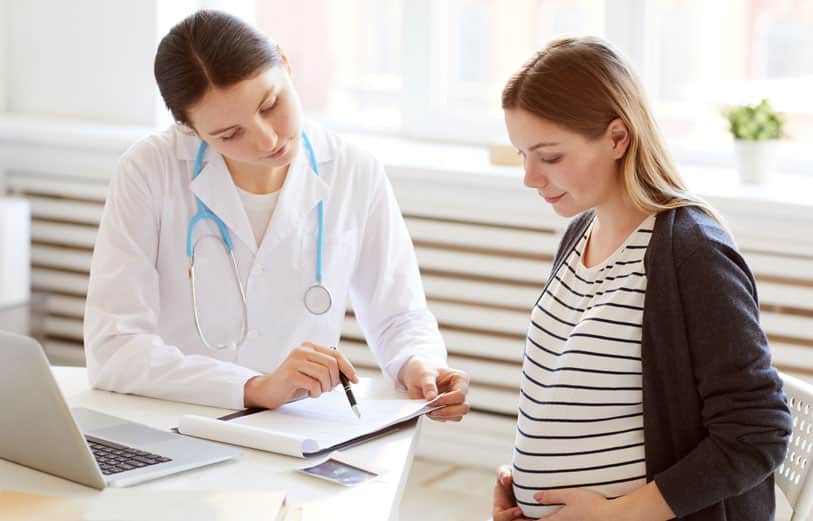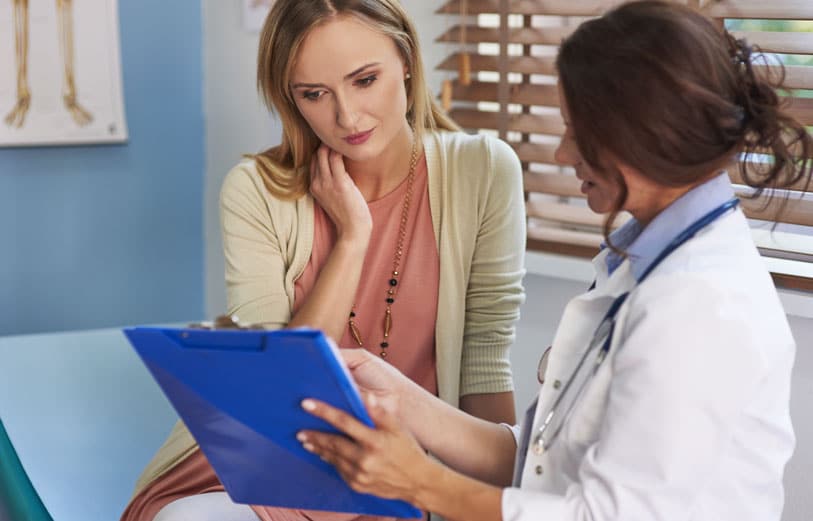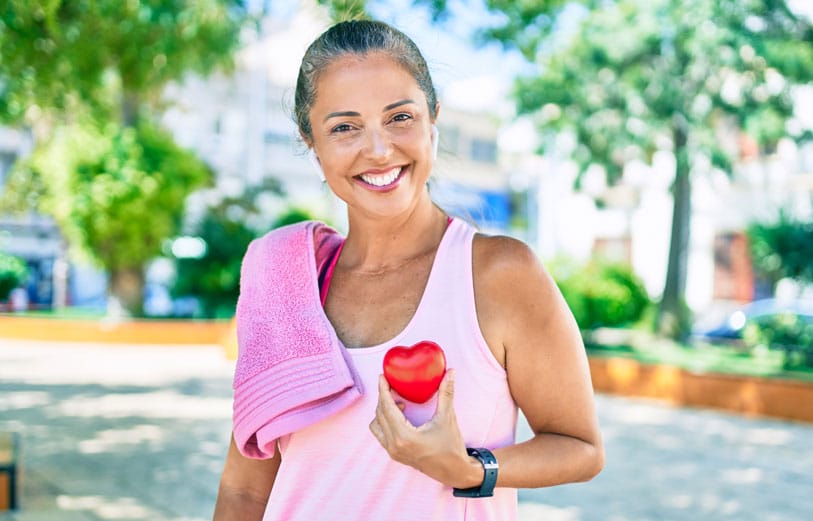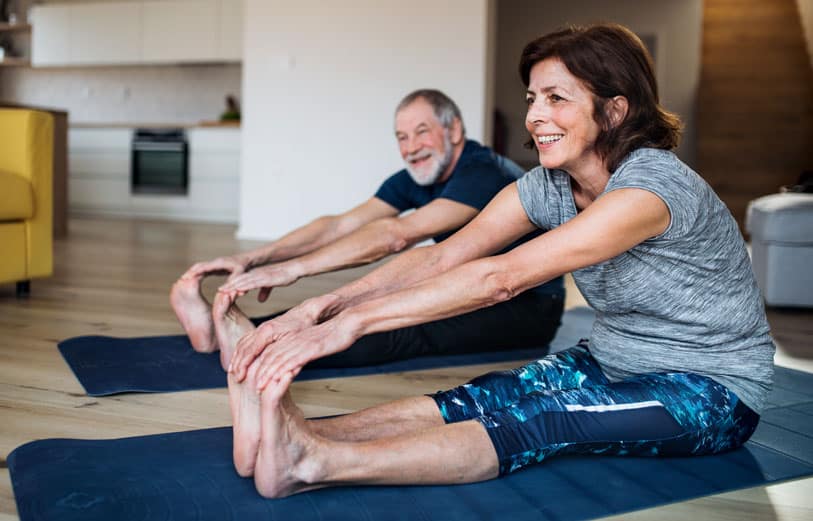Coronavirus: Protect Yourself and Your Family
To avoid exposure to COVID-19
If you have possible or confirmed COVID-19
- Stay home from work, school, and away from other public places. If you must go out, avoid using any kind of public transportation, ridesharing, or taxis.
- Monitor your symptoms carefully. If your symptoms get worse, call your healthcare provider immediately.
- Get rest and stay hydrated.
- If you have a medical appointment, call the healthcare provider ahead of time and tell them that you have or may have COVID-19.
- For medical emergencies, call 911 and notify the dispatch personnel that you have or may have COVID-19.
- Cover your cough and sneezes.
- Wash your hands often with soap and water for at least 20 seconds or clean your hands with an alcohol-based hand sanitizer that contains at least 60% alcohol.
- As much as possible, stay in a specific room and away from other people in your home. Also, you should use a separate bathroom, if available. If you need to be around other people in our outside of the home, wear a facemask.
- Avoid sharing personal items with other people in your household, like dishes, towels, and bedding.
- Clean all surfaces that are touched often, like counters, tabletops, and doorknobs. use household cleaning sprays or wipes according to the label instructions.
Please go to www.cdc.gov/covid19-symptoms for information on COVID-19 symptoms.
Guidance on the Use of Masks by the General Public
SARS-CoV-2 is a novel coronavirus that has emerged and caused coronavirus disease (abbreviated as COVID-19). Public health experts continue to learn about COVID-19, but based on current data and similar coronaviruses, the virus is believed to be spread between close contacts via respiratory droplets or contact with contaminated surfaces. While staying home, social distancing, and strict hand hygiene are still preferred methods for preventing further spread of COVID-19, facemasks are one more tool that may be used by the general public and essential workers to protect each other from respiratory droplets produced when we cough, sneeze, or talk.
The U.S. Centers for Disease Control and Prevention (CDC) now recommends wearing cloth face coverings in public settings where other social distancing measures are difficult to maintain (e.g., grocery stores and pharmacies), especially in areas of significant community-based transmission. CDC also advises the use of simple cloth face coverings to slow the spread of the virus and help people who may have the virus and do not know it from transmitting it to others.
The most effective measures for preventing further spread of COVID-19 remain staying home when you are sick, maintain physical separation between other people while out in public (at least 6 feet), and frequently washing your hands with either soap and water or an alcohol-based hand rub.
When to Wear a Mask
All Illinoisans should wear as mask or face covering when they must leave their home or report to work for essential operations and they either cannot or it is impractical to maintain 6 feet of physical distance between themselves and others. Examples include:
- Shopping at essential businesses, like grocery stores or pharmacies,
- Picking up food from the drive thru or curbside pickup,
- While visiting your health care provider,
- Traveling on public transportation,
- Interacting with customers, clients, or coworkers at essential businesses,
- Performing essential services for state and local government agencies, such as laboratory testing, where close interactions with other people are unavoidable, and
- When feeling sick, coughing, or sneezing.
Those who are staying home and have no close contacts that are infected with COVID-19 don’t need a mask while at home. Provided you do so alone or with close, household contacts, other situations that don’t require a mask or face covering include running or walking in your neighborhood, mowing the lawn, performing spring yard cleanup, gardening, driveway car washing, and other outdoor activities on your own property. Nevertheless we must be intentional about avoiding crowds and social distancing so we can enjoy physical connections later.
By following this guidance when you must leave your home, you will reduce your fellow citizen’s exposure to respiratory droplets and infectious particles, and they yours. This will protect all of us.
Best Practices for Homemade Masks or Face Coverings
Best practices for making and wearing homemade masks include:
- Using materials available at home or buying materials online to avoid exposure in public places.
- Purchasing masks made by small businesses, saving medical masks for health care workers and potentially helping the local economy.
- Making masks from materials that will hold up to daily washing and drying. Wash and dry newly-sewn masks before using them for the first time.
- Having more than one mask per person so they can be laundered daily. This will also be helpful if your mask becomes wet, damaged, or no longer fits and you need to replace it.
- Washing your hands with alcohol-based hand rub or soap and water before putting on a mask, immediately after removing it, or if you touch the mask while using it.
- The mask should fit snugly around your mouth and nose. A metal wire sewn or built into the mask will help it conform to the bridge of your nose.
- Avoiding touching the mask while using it. If you do wash your hands with soap and water or alcohol-based hand rub.
- There are relatively few studies of the effectiveness of masks made from homemade materials. Whether you use cotton fabrics, paper-based shop towels, or other materials, try to strike a balance between the materials you already have at home, how easy it will be to breathe while wearing the mask for extended periods away from home, and whether or not you would prefer to craft a new mask every day (paper) or wash and reuse your mask(s).
- Replacing your mask when wet, damaged or it no longer fits your face. Masks should not be worn damp or when wet from spit or mucus.
- Try to avoid touching the outer surface of the mask when removing it. Remove the mask by untying it or unfastening the ear loops. Place it in a bag or bin away from small children or pets until it can be laundered.
- This does not replace but enhances other IDPH guidance concerning social distancing and universal masking in congregate living facilities.
How do I care for my mask?
It’s a good idea to wash your mask or face covering at least daily. Place your used masks in a bag or bin away from small children or pets until they can be laundered with detergent and dried on a hot cycle. If you need to remove and reuse your mask before washing, consider putting it in a plastic or paper bag
(not your backpack or purse) and be mindful not to put the mask where others can touch it or where the mask will contaminate other, shared surfaces. Wash your wash your hands immediately after putting it back on and avoid touching your face.
Paper-based masks, like those crafted from shop towels, should be discarded after each use.
How do can I make my own mask or face covering?
There are a number of online resources, including the following, with instructions for making homemade masks and face coverings from cloth fabric or paper. You may even be able to use a 3D Printer with open source designs if you have one at home.
- CDC DIY Cloth Face Coverings (April 4)
- CDC Recommendations for Cloth Face Covers
- U.S. Surgeon General How to Make Your Own Face Covering (YouTube)
- CDC Cloth Face Covers FAQ
- Pennsylvania Department of Public Health Guidance on Homemade Masks during COVID-19
- California Department of Public Health
- Minnesota Department of Health Interim Guidance on Alternative Facemasks
- New York City Department of Health and Mental Hygiene Face Coverings FAQ
- National Institutes of Health 3D Print Exchange
- JOANNE Fabric Stores
- Easy No-Sew Shop Towel Mask (YouTube)
- Coronavirus Tips: How to make a mask without sewing (YouTube)
This guidance was adapted from universal masking guidance available from the Pennsylvania Department of Public Health, California Department of Public Health, and New York City Department of Health and Mental Hygiene.
What to do if you have symptoms of coronavirus disease 2019 (COVID-19) and have not been around anyone who has been diagnosed with COVID-19
If you have a fever, cough or shortness of breath but have not been around anyone with diagnosed COVID-19, follow the steps below to help prevent your infection from spreading to people in your home and community.
Could I have COVID-19?
The most common symptoms of COVID-19 are fever, cough and shortness of breath. This is similar to other respiratory viruses. People who live with (e.g., household members), are caring for, or are intimate partners (e.g., sexual partners) with someone who has confirmed or possible COVID-19 infection are at highest risk of getting COVID-19. The risk in other types of settings (e.g., school or work) is thought to be much lower, but is not zero. This is why hand hygiene and social distancing are so important as prevention measures.
Should I go to my doctor and get tested for COVID-19?
If you are over the age of 60 years, are pregnant, or have medical conditions (like cancer, immunosuppression, heart, lung, or kidney disease, and diabetes) you may be at higher risk of COVID-19 complications. Call your physician’s office if you are concerned about a medical condition and ask if you need to be evaluated in person. They may want monitor your health more closely or test you for influenza and COVID-19.
If you do not have a high-risk condition and your symptoms are mild, it is very likely you do not need to be evaluated in person and do not need to be tested for COVID-19. There are currently no medications to treat COVID-19. The best thing you can do to protect yourself and others in your community is to stay home while you have mild symptoms.
Can the IDPH COVID-19 hotline help me to get tested for COVID-19?
The IDPH COVID-19 hotline does not assist residents with getting tested and does not make decisions about who should be tested. Please do not contact the COVID-19 hotline for issues related to COVID-testing. These decisions are made by health care providers.
Can a health department help me to get tested for COVID-19?
Health departments do not order COVID-19 tests. Testing is done by health care providers who evaluate patients individually and decide whether testing is needed.
What should I do to keep my respiratory infection from spreading to my family and other people in the community?
Because we are trying to stop the spread of respiratory illnesses, we ask that you take the following steps to help protect people in your home and your community:
Stay home except to get medical care
- You should restrict activities outside your home, except for getting medical care. Do not go to work, school, or public areas. Avoid using public transportation, ride-sharing, or taxis.
- Separate yourself from other people and animals in your home.
- As much as possible, you should stay in a specific room and away from other people in your home. Use a separate bathroom, if available.
- Do not handle pets or other animals while sick. See COVID-19 and Animals for more information.
Call ahead before visiting your doctor
If you have a medical appointment, call the healthcare provider and tell them that you have symptoms that are consistent with COVID-19. This will help the healthcare provider’s office take steps to keep other people from getting infected or exposed.
If available, wear a facemask
You should wear a facemask when you are around other people (e.g., sharing a room or vehicle) or pets and before you enter a healthcare provider’s office. If you are not able to wear a facemask (for example, because it causes trouble breathing), then people who live with you should avoid being in the same room with you
Cover your coughs and sneezes
Cover your mouth and nose with a tissue when you cough or sneeze. Throw used tissues in a lined trash can; immediately wash your hands with soap and water for at least 20 seconds or clean your hands with an alcohol-based hand sanitizer that contains at least 60 to 95% alcohol, covering all surfaces of your hands and rubbing them together until they feel dry. Soap and water is preferred if hands are visibly dirty.
Avoid sharing personal household items
You should not share dishes, drinking glasses, cups, eating utensils, towels, or bedding with other people or pets in your home. After using these items, they should be washed thoroughly with soap and water.
Clean your hands often
Wash your hands often with soap and water for at least 20 seconds. If soap and water are not available, clean your hands with an alcohol-based hand sanitizer that contains at least 60% alcohol, covering all surfaces of your hands and rubbing them together until they feel dry. Soap and water is preferred if hands are visibly dirty. Avoid touching your eyes, nose, and mouth with unwashed hands.
Clean all “high-touch” surfaces every day
High touch surfaces include counters, tabletops, doorknobs, bathroom fixtures, toilets, phones, keyboards, tablets, and bedside tables. Also, clean any surfaces that may have blood, stool, or body fluids on them. Use a household cleaning spray or wipe, according to the label instructions. Labels contain instructions for safe and effective use of the cleaning product including precautions you should take when applying the product, such as wearing gloves and making sure you have good ventilation during use of the product.
Monitor your symptoms
Call your health care provider if you have:
- Fever, cough, trouble breathing, or other flu-like symptoms that are not better or are worsening after 24-48 hours.
- Mild symptoms and are an older adult or have any of the chronic health conditions listed above
Your health care provider will determine if you should be tested.
Before seeking in-person care, call your healthcare provider and tell them that your symptoms. Put on a facemask before you entering any health care facility. These steps will help the healthcare provider’s office to keep other people in the office or waiting room from getting your infection.
If you have a medical emergency and need to call 911, notify the dispatch personnel that you have symptoms consistent with COVID-19. If possible, put on a facemask before emergency medical services arrive.
Discontinuing home isolation
If you have fever, cough or shortness of breath and have not been around anyone who has been diagnosed with COVID- 19, you should stay home away from others for 7 days or 72 hours after your fever is gone and your symptoms are improving, whichever is longer.
Adapted from Washington State Department of Health 3.15.2020
Implementation of Mitigation Strategies for Communities with Local COVID-19 Transmission
When a novel virus with pandemic potential emerges, nonpharmaceutical interventions, which will be called community mitigation strategies in this document, often are the most readily available interventions to help slow transmission of the virus in communities. Community mitigation is a set of actions that persons and communities can take to help slow the spread of respiratory virus infections. Community mitigation is especially important before a vaccine or drug becomes widely available.
The following is a framework for actions which local and state health departments can recommend in their community to both prepare for and mitigate community transmission of COVID-19 in the United States. Selection and implementation of these actions should be guided by the local characteristics of disease transmission, demographics, and public health and healthcare system capacity.
Goals
The goals for using mitigation strategies in communities with local COVID-19 transmission are to slow the transmission of disease and in particular to protect:
- Individuals at increased risk for severe illness, including older adults and persons of any age with underlying health conditions (See Appendix A)
- The healthcare and critical infrastructure workforces
These approaches are used to minimize morbidity and mortality and the social and economic impacts of COVID-19. Individuals, communities, businesses, and healthcare organizations are all part of a community mitigation strategy. These strategies should be implemented to prepare for and when there is evidence of community transmission. Signals of ongoing community transmission may include detection of confirmed cases of COVID-19 with no epidemiologic link to travelers or known cases, or more than three generations of transmission.
Implementation is based on:
- Emphasizing individual responsibility for implementing recommended personal-level actions
- Empowering businesses, schools, and community organizations to implement recommended actions, particularly in ways that protect persons at increased risk of severe illness
- Focusing on settings that provide critical infrastructure or services to individuals at increased risk of severe illness
- Minimizing disruptions to daily life to the extent possible
Guiding principles
- Each community is unique, and appropriate mitigation strategies will vary based on the level of community transmission, characteristics of the community and their populations, and the local capacity to implement strategies (Table 1).
- Consider all aspects of a community that might be impacted, including populations most vulnerable to severe illness and those that may be more impacted socially or economically, and select appropriate actions.
- Mitigation strategies can be scaled up or down depending on the evolving local situation.
- When developing mitigation plans, communities should identify ways to ensure the safety and social well-being of groups that may be especially impacted by mitigation strategies, including individuals at increased risk for severe illness.
- Activation of community emergency plans is critical for the implementation of mitigation strategies. These plans may provide additional authorities and coordination needed for interventions to be implemented (Table 2).
- Activities in Table 2 may be implemented at any time regardless of the level of community transmission based on guidance on from local and state health officials.
- The level of activities implemented may vary across the settings described in Table 2 (e.g., they may be at a minimal/moderate level for one setting and at a substantial level for another setting in order to meet community response needs).
- Depending on the level of community spread, local and state public health departments may need to implement mitigation strategies for public health functions to identify cases and conduct contact tracing (Table 3). When applied, community mitigation efforts may help facilitate public health activities like contact tracing
Local Factors to Consider for Determining Mitigation Strategies
Epidemiology
- Level of community transmission
- Number and type of outbreaks (e.g., nursing homes, schools, etc.)
- Impact of the outbreaks on delivery of healthcare or other critical infrastructure or services
- Epidemiology in surrounding jurisdictions
Community Characteristics
- Size of community and population density
- Level of community engagement/support
- Size and characteristics of vulnerable populations
- Access to healthcare
- Transportation (e.g., public, walking)
- Planned large events
- Relationship of community to other communities (e.g., transportation hub, tourist destination, etc.)
Healthcare Capacity
- Healthcare workforce
- Number of healthcare facilities (including ancillary healthcare facilities)
- Testing capacity
- Intensive care capacity
- Availability of personal protective equipment (PPE)
Public health capacity
- Public health workforce and availability of resources to implement strategies
- Available support from other state/local government agencies and partner organizations


